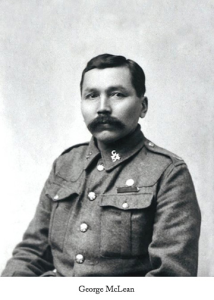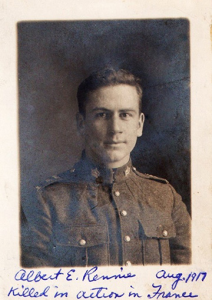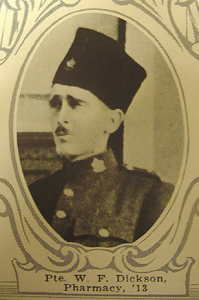PLACES OF BC: Tracking more stories of the First World War
April 26, 2016
PLACES OF BC: Tracking more stories of the First World War
By Greg Dickson and Mark Forsythe
One of the most gratifying aspects of the publication of our book, From the West Coast to the Western Front, published by Harbour in 2014, was connecting with British Columbians who shared a keen interest in our history — and readily shared their own family stories that intersect with that history. Our book was very much a collaboration with CBC Radio listeners across the province, many of whom had already embarked on journeys of discovery about a grandfather’s Great War experiences or an aunt’s sacrifices as a Nursing Sister. While some of these stories were richly documented, others had become mere tenuous strands of memory.

Since the book came out, we’ve travelled to the Cariboo, Vancouver Island, the Kootenays, Prince Rupert, and across the Lower Mainland to meet those CBC listeners and to hear new Great War stories. We’ve driven up the gravel mountain road near Greenwood to visit the silent ghost town of Phoenix and see its granite cenotaph. Fifteen men from Phoenix never made it home, but their memory is still honoured on a hillside above the bulldozed townsite. As Margaret Ormsby noted in her centennial history of British Columbia, in 1919 there were still enough inhabitants of Phoenix to erect a war memorial, but “by the end of the year the town would be deserted.”[1]
The grave of Aboriginal war hero George McLean has been rediscovered in the Upper Nicola Band Cemetery. George, who enlisted with the 54th Kootenay Regiment, single-handedly captured nineteen enemy soldiers at Vimy and killed five others who tried to reach a machine gun. His bravery saved many lives. Some eighty years after his death, a military marker has finally been placed at his grave.
Since the book’s publication, both of us have learned more about family members who served. Greg has discovered that the remains of his grandfather’s cousin have been found in a crater that became a temporary grave at Vimy Ridge. William F. Dickson and forty-three others may soon have their proper burial. Mark has reconnected with family related to his great uncle Albert Rennie, killed at Hill 70 in August 1917.
 He has held the memorial cross sent to Albert’s grieving mother, who died two months after hearing of her son’s death
He has held the memorial cross sent to Albert’s grieving mother, who died two months after hearing of her son’s death
We have also visited Vancouver Island University (VIU) at Nanaimo to speak with students about our project, and to meet Dr Stephen Davies, director of The Canadian Letters and Images Project. Over the last sixteen years Stephen has created an archive of Canadian soldiers’ letters, postcards, and images sent home from war. Net proceeds from our book will help hire more students to transcribe this rich legacy, which is no longer hidden in attics or forgotten photo albums. The rich collections of documents and photographs at VIU and at many museums in British Columbia, combined with the strands of memory that have survived for the past century, are deeply personal testaments to our life as a nation.
http://www.bcstudies.com/?q=book-reviews/west-coast-western-front-britis…
http://www.canadianletters.ca/
[1] Margaret A. Ormsby, British Columbia: A History (Toronto: Macmillan of Canada 1958), 402.



